Color-Changing Garments for Emotional Reflection
Ripple from Noura Howell on Vimeo.
How do emotional biosensory data displays become embroiled in questions of how or what we should feel or be?
This work explores the role of ambiguity in emotional biosensing displays. A subtle, ambiguous color-change in the garment's pattern responds to the wearer's skin conductance, indicating a potential moment of emotional excitement. Pairs of friends, housemates, or spouses wore such color-changing garments over the course of a conversation or in daily life. They formed social emotional interpretations about the display in a variety of contexts, relating the display to a variety of emotions such as joy or embarrassment. Yet, the display also raised tensions for some participants about who has more interpretive authority, humans or data?
This work was published in and presented at CHI 2019.
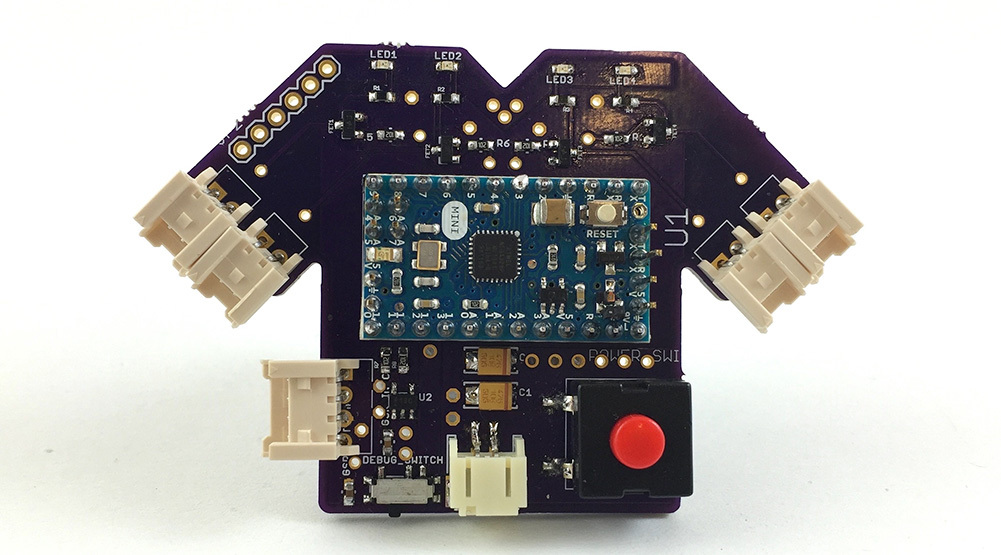
The PCB is about 6cm across and was hidden in an inner shirt pocket. A Bitalino skin conductance sensor is embedded in the shirt. The data goes to the Arduino, where a low pass filter detected sudden increased in skin conductance. If there is a spike in skin conductance, the Arduino opens the transistor gates to send power to the conductive threads embroidered in the shirt sleeve. This heats up the thermochromic pigment coating the conductve threads, causing the color change. I designed the breadboard circuit. Tomás adapted the design to Eagle for the PCB. I soldered the PCB.
Textile Studies
As part of the process, I experimented with different textile techniques including embroidery and weaving. Some of these studies are shown here.
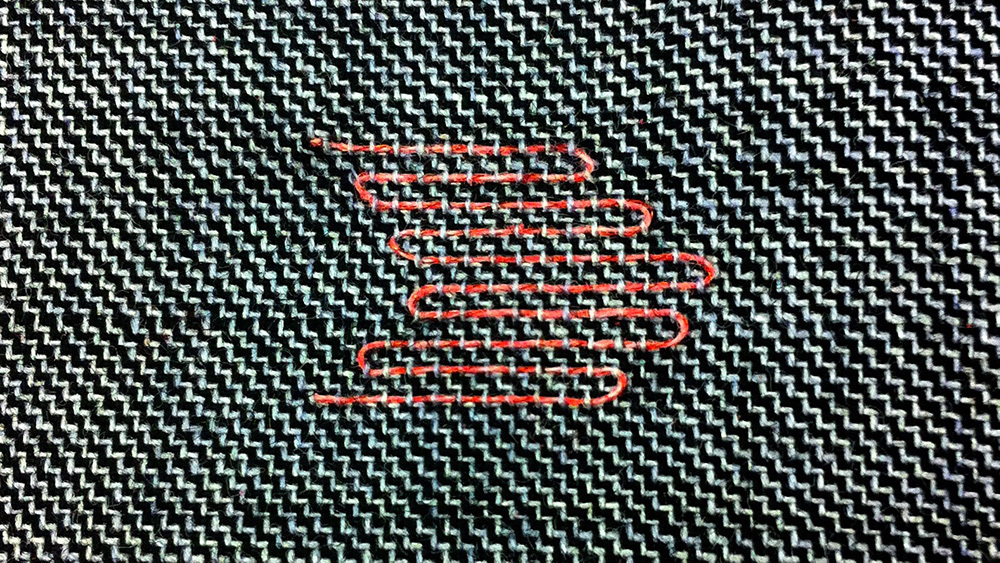
Inlay embroidery study with red thermochromic conductive thread on black and white twill. The red shape is about 1cm square. I wanted the color-changing display to really feel like part of the fabric, so I made the thermochromic thread follow the weave of the base fabric.
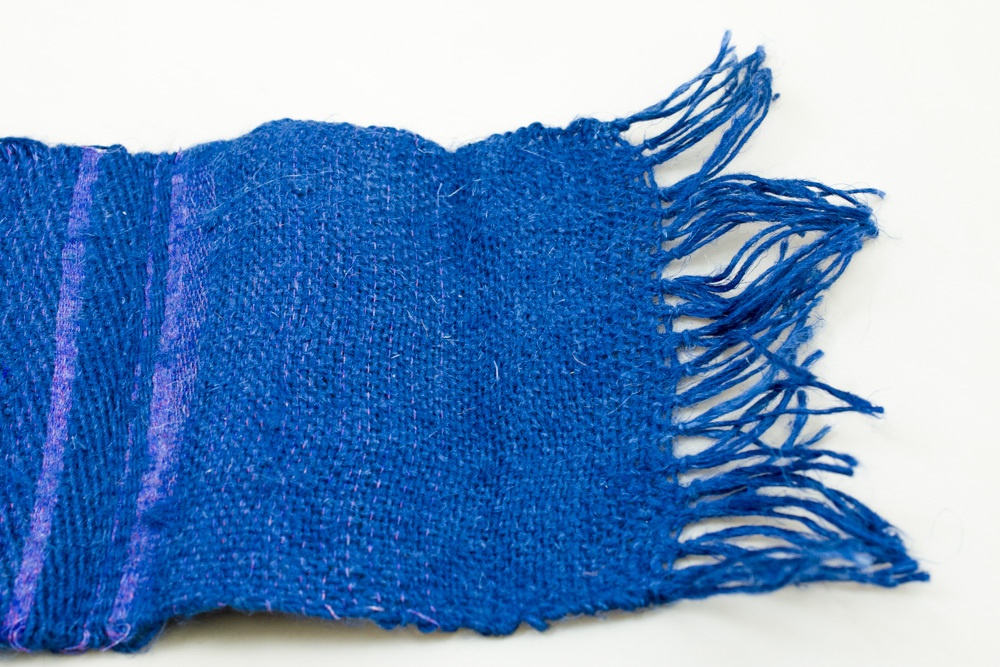
Weave study with purple thermochromic conductive thread as weft stripes in blue twill and plain weave.
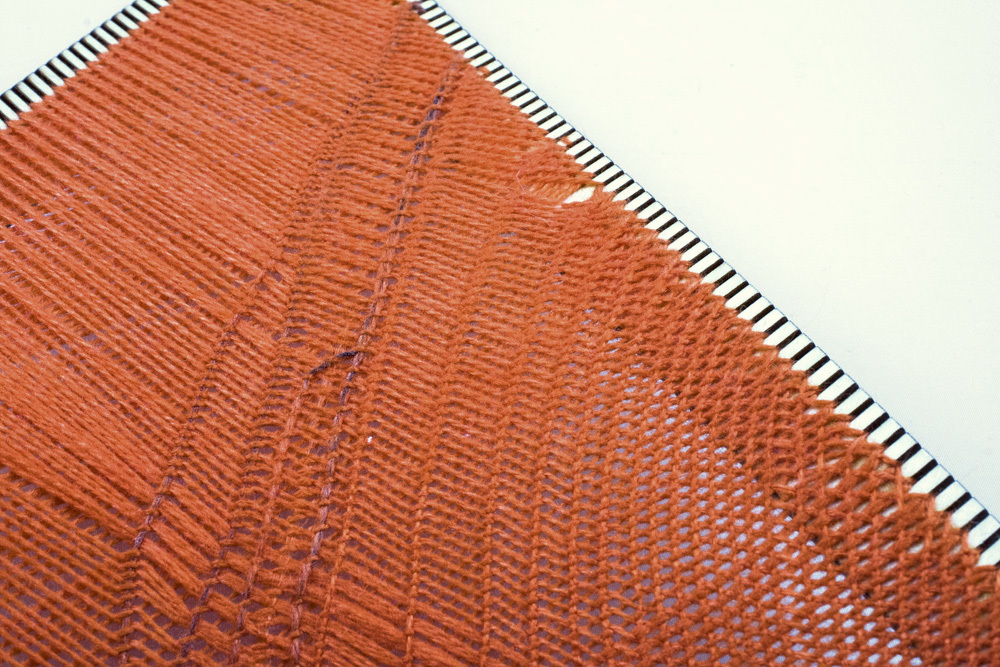
I made a custom loom in the shape of a triangle to experiment with a three-way weave. By weaving at different densities, I altered the fabric’s stiffness.
Color-Changing Displays Embedded in Everyday Garments

Three pinstripes on the sleeve change colors in response to emotional excitement. Pairs of friends wore these shirts throughout daily life. I designed the garment's fabric display to be extremely subtle so that participants could wear it without attracting unwanted attention. The simplicity and minimalism of the final garment more easily accommodated the fashion sense of a variety of participants.
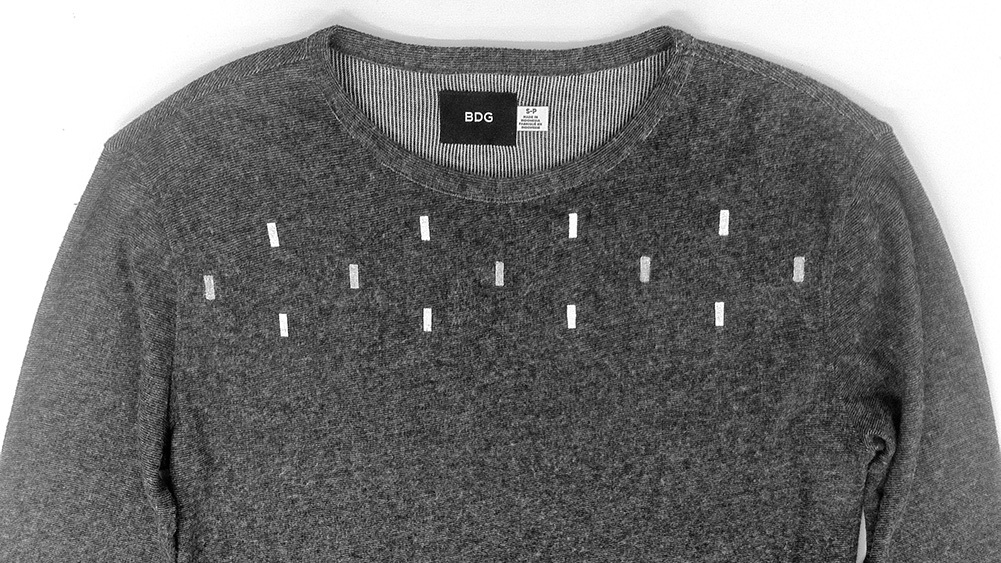
A screenprinted pattern on the front of the shirt changes color in response to emotional excitement. During an earlier study, pairs of friends wore these shirts during a 45 minute conversation in an office setting.
Papers
Tensions of Data-Driven Reflection: A Case Study of Real-Time Emotional Biosensing. 2018. Noura Howell, Laura Devendorf, Tomás Alfonso Vega Gálvez, Rundong Tian, Kimiko Ryokai. Proceedings of the 2018 CHI Conference on Human Factors in Computing Systems. pdf
Biosignals as Social Cues: Ambiguity and Emotional Interpretation in Social Displays of Skin Conductance. 2016. Noura Howell, Laura Devendorf, Rundong (Kevin) Tian, Tomás Vega Galvez, Nan-Wei Gong, Ivan Poupyrev, Eric Paulos, Kimiko Ryokai. Proceedings of the 2016 ACM Conference on Designing Interactive Systems. pdf
2015 - 2018